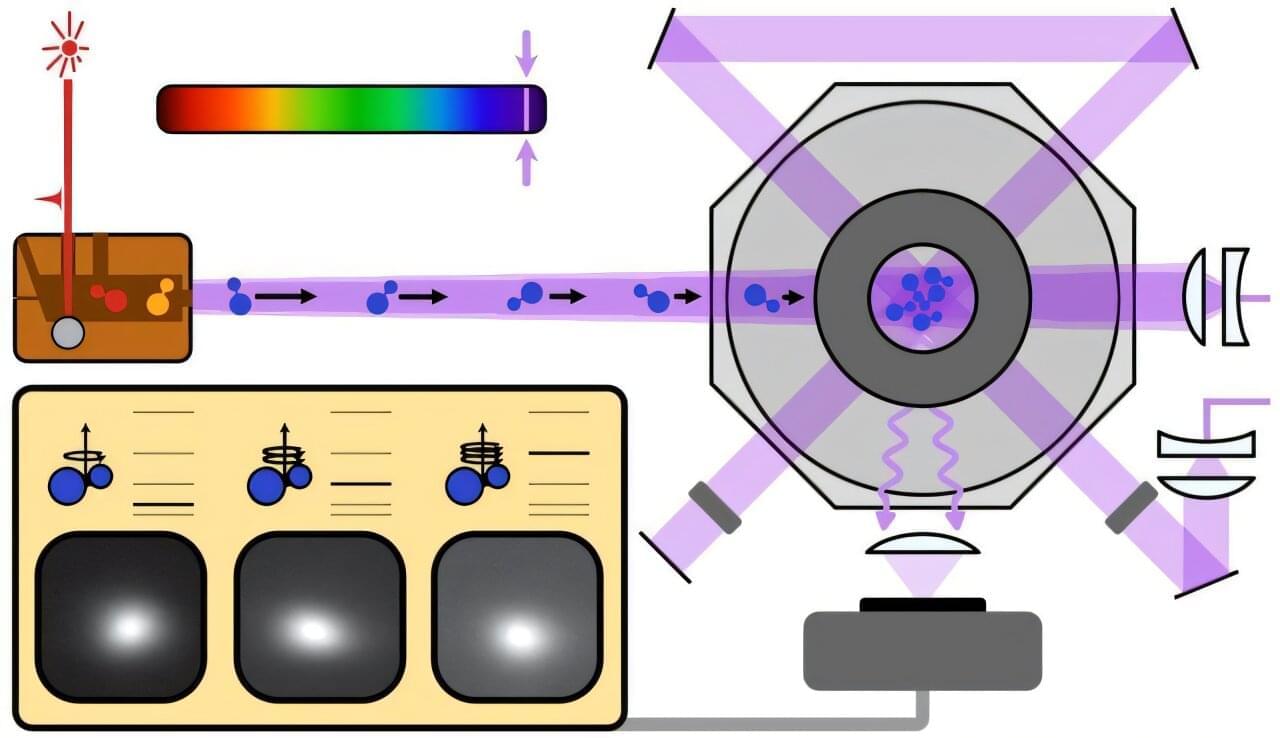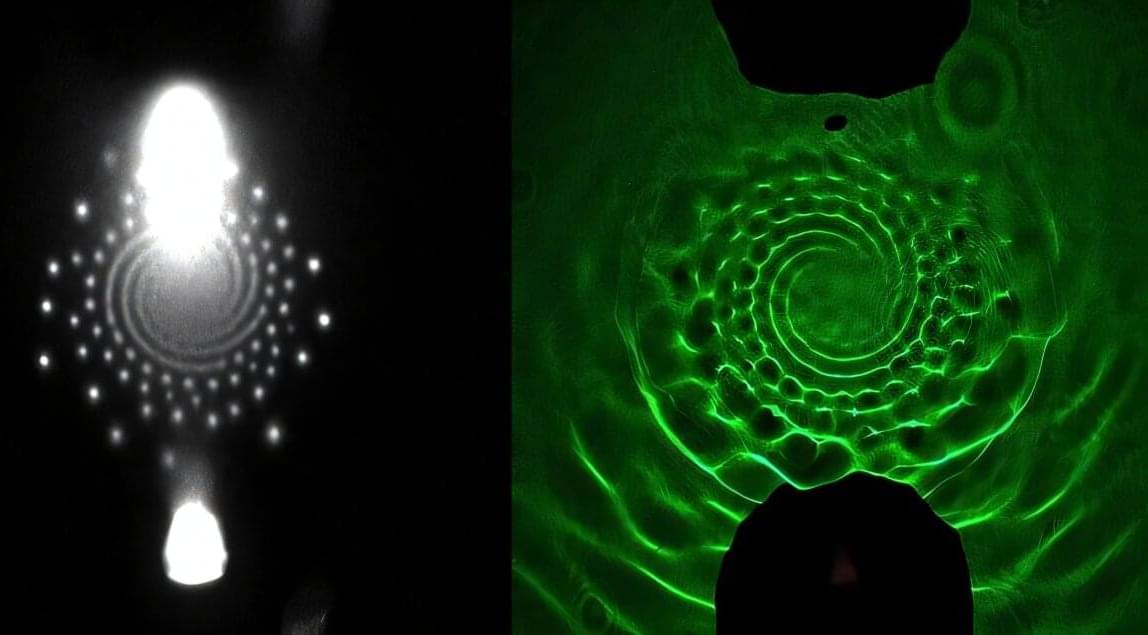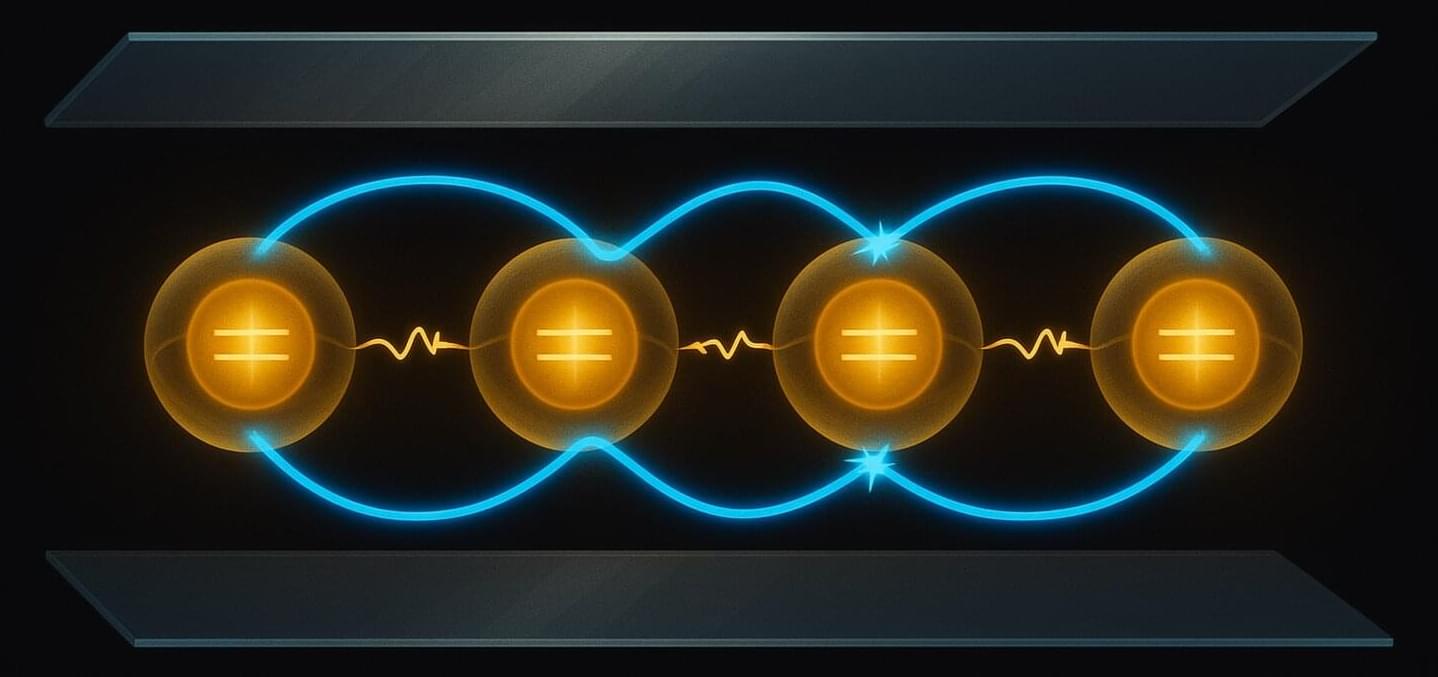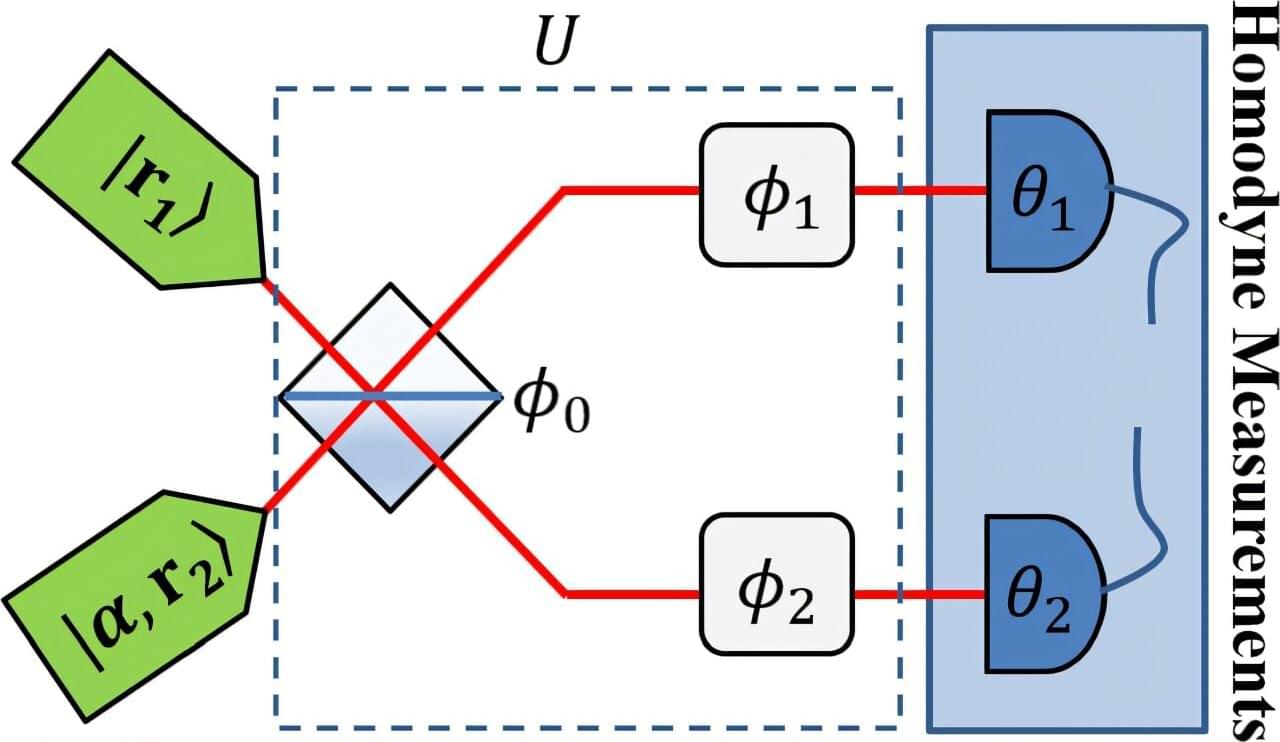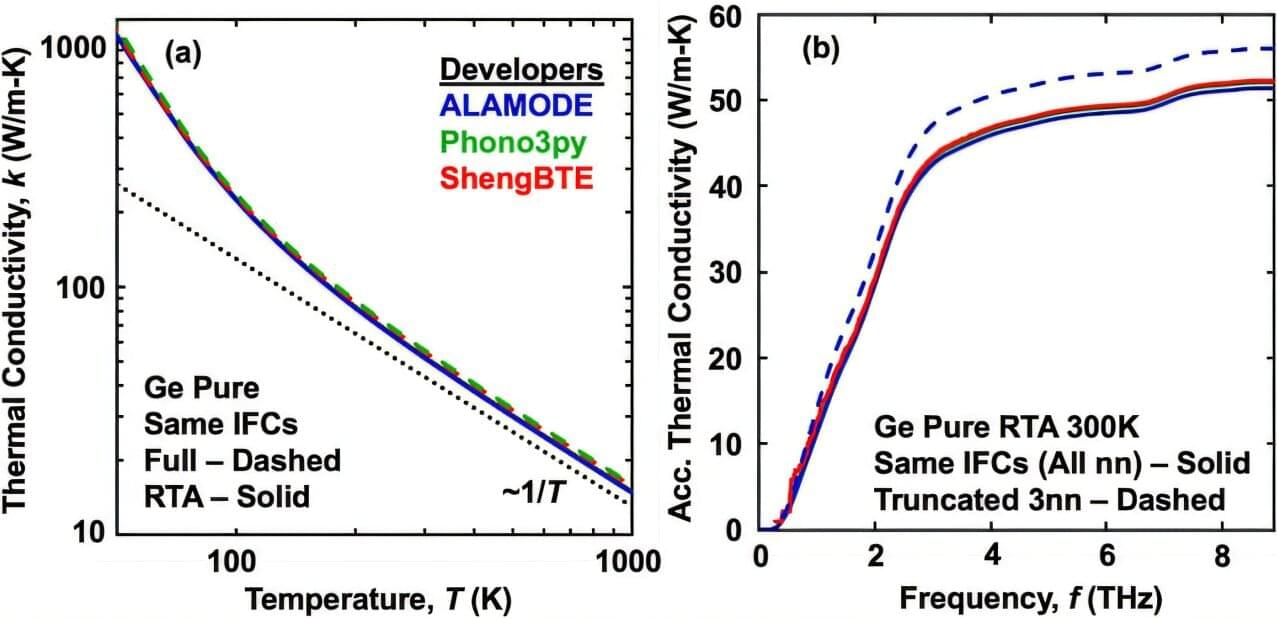Researchers from the Department of Molecular Physics at the Fritz Haber Institute have demonstrated the first magneto-optical trap of a stable “closed-shell” molecule: aluminum monofluoride (AlF). They were able to cool AlF with lasers and selectively trap it in three different rotational quantum levels—breaking new ground in ultracold physics.
Their experiments open the door to advanced precision spectroscopy and quantum simulation with AlF. The work has been accepted for publication in Physical Review Letters and is currently available on the arXiv preprint server.
Cooling matter to temperatures near absolute zero (0 K, −273.15°C) acts like a microscope for quantum mechanical behavior, bringing physics that is normally blurred out into sharp focus. Classic historical examples include the 1911 discovery of superconductivity in mercury metal cooled near 4 K, and anomalous thermal behavior in molecular hydrogen due to its “ortho” and “para” spin states. These phenomena confounded classical physics theories of the time, driving both the evolution of quantum mechanics, as well as efforts to reach ever lower temperatures.
